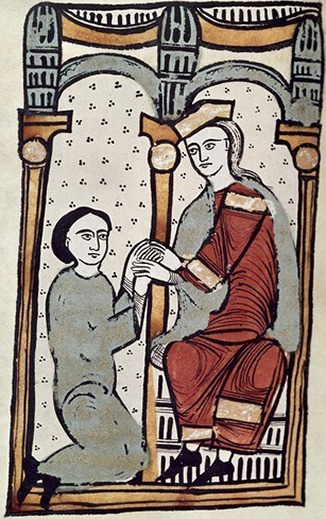|
Ermengol II Of Urgell
Ermengol (or Armengol) II (died 1038), called the Pilgrim, was the Count of Urgell from 1011 to his death. He was the son of Ermengol I, Count of Urgell and one of his wives. He was a child when he succeeded his father and was put under the regency of his uncle Ramon Borrell, Count of Barcelona until 1018. Ermengol went on a pilgrimage to the Holy Land and died in 1038 at Jerusalem. With his uncle's help, Armengol began a successful war of reconquest to the south, taking Montmagastre, Alòs, Malagastre, Rubió, and Artesa. Around 1015, the bishop of Urgell, Armengol, repopulated the region of Guissona. Finally, Arnau Mir de Tost occupied the castle of Àger in 1034. The taifa kings of Lleida and Zaragoza Zaragoza, also known in English as Saragossa,''Encyclopædia Britannica'"Zaragoza (conventional Saragossa)" is the capital city of the Zaragoza Province and of the autonomous community of Aragon, Spain. It lies by the Ebro river and its tributari ... also granted lands ... [...More Info...] [...Related Items...] OR: [Wikipedia] [Google] [Baidu] |
Saint Ermengol
Saint Ermengol (also ''Armengol'' or ''Armengod'') or Hermengaudius (died 1035) was the bishop of Urgell from 1010. Possibly born in the village of Ayguatébia, he was the son of Bernat I, viscount of Conflent, and of his wife Guisla de Lluçià, and also the nephew and successor of Bishop Sal·la and a member of the family of the counts of Conflent.''The Bishop Builds a Bridge: Sanctity and Power in the Medieval Pyrenees'', Jeffrey A. Bowman, The Catholic Historical Review, Vol. 88, No. 1 (Jan., 2002), 1-3. By 1002 Ermengol was an archdeacon and the following year the Bishop of Urgell, Sal·la, had made arrangements for Emermengol to succeed him. He began his episcopate by reforming the cathedral canons, along the lines of the life of Saint Augustine of Hippo, and granting them land in Vallespir, Cerdanya, and Alt Urgell. In 1012, he travelled to Rome for an audience with Pope Benedict VIII,Or possible 1011 for an audience with Sergius IV. who confirmed the possessions of his ... [...More Info...] [...Related Items...] OR: [Wikipedia] [Google] [Baidu] |
11th-century Visigothic People
The 11th century is the period from 1001 ( MI) through 1100 ( MC) in accordance with the Julian calendar, and the 1st century of the 2nd millennium. In the history of Europe, this period is considered the early part of the High Middle Ages. There was, after a brief ascendancy, a sudden decline of Byzantine power and a rise of Norman domination over much of Europe, along with the prominent role in Europe of notably influential popes. Christendom experienced a formal schism in this century which had been developing over previous centuries between the Latin West and Byzantine East, causing a split in its two largest denominations to this day: Roman Catholicism and Eastern Orthodoxy. In Song dynasty China and the classical Islamic world, this century marked the high point for both classical Chinese civilization, science and technology, and classical Islamic science, philosophy, technology and literature. Rival political factions at the Song dynasty court created strife amongst th ... [...More Info...] [...Related Items...] OR: [Wikipedia] [Google] [Baidu] |

